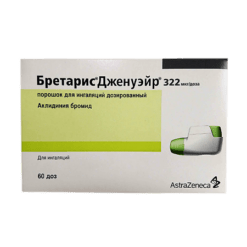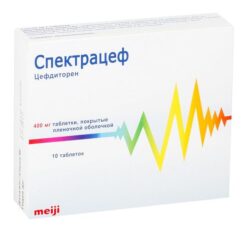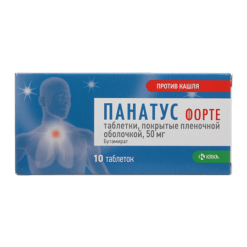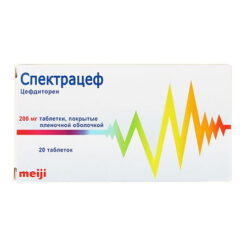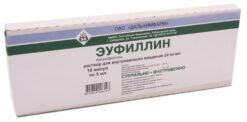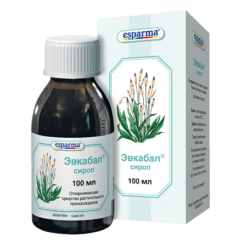No products in the cart.
Aspirin Complex, 3.5g 10 pcs
€16.06 €13.38
Description
Aspirin Complex is a combination drug.
Acetylsalicylic acid has antipyretic, analgesic and anti-inflammatory effects, and also reduces platelet aggregation.
Phenylephrine is a sympathomimetic and, having a vasoconstrictor effect, reduces swelling of the mucous membranes of the nose and paranasal sinuses, which facilitates breathing.
Chlorphenamine is a blocker of histamine H1-receptors and has antiallergic effect: it eliminates itching (including eyes, nose), swelling and hyperemia of mucous membranes of the nasal cavity, nasopharynx and sinuses, reduces exudation.
Indications
Indications
Symptomatic treatment of influenza, ARVI and other colds accompanied by high fever, chills, headache and muscle pain, runny nose and/or nasal congestion, sore throat and sneezing.
Pharmacological effect
Pharmacological effect
Aspirin Complex is a combination drug.
Acetylsalicylic acid has antipyretic, analgesic and anti-inflammatory effects, and also reduces platelet aggregation.
Phenylephrine is a sympathomimetic and, having a vasoconstrictor effect, reduces swelling of the mucous membranes of the nose and paranasal sinuses, resulting in easier breathing.
Chlorphenamine is a blocker of histamine H1 receptors, has an antiallergic effect: eliminates itching (including eyes, nose), swelling and hyperemia of the mucous membranes of the nasal cavity, nasopharynx and sinuses, reduces exudation phenomena.
Special instructions
Special instructions
Acetylsalicylic acid may cause bronchospasm, an attack of bronchial asthma or other hypersensitivity reactions. Risk factors are the presence of bronchial asthma, nasal polyps, fever, chronic bronchopulmonary diseases, a history of allergies (allergic rhinitis, skin rashes).
Acetylsalicylic acid may increase the tendency to bleeding, which is associated with its inhibitory effect on platelet aggregation. This should be taken into account when surgical interventions are necessary, including minor procedures such as tooth extraction. Before surgery, to reduce bleeding during surgery and in the postoperative period, you should stop taking the drug 5-7 days in advance and notify the doctor. Children should not be prescribed medications containing acetylsalicylic acid, since in the case of a viral infection the risk of Reye’s syndrome increases. Symptoms of Reye’s syndrome are prolonged vomiting, acute encephalopathy, and liver enlargement.
During treatment, it is not recommended to drink alcohol due to the increased risk of side effects from the gastrointestinal tract associated with taking acetylsalicylic acid, and the increased sedative effect of chlorphenamine.
Due to the fact that when using chlorphenamine, changes in allergy skin test parameters are possible, it is recommended to inform your doctor about the use of the drug and discontinue it three days before performing skin tests.
During treatment, it is not recommended to use painkillers, sympathomimetics, guanethidine and beta-blockers.
It is not recommended to take the drug systematically and for prophylactic purposes before vaccinations.
Patients limiting their salt intake should note that each sachet contains sodium bicarbonate.
The active component phenylephrine, which is part of the drug, can cause a positive result during a doping test in athletes.
With renal failure and reduced plasma albumin levels, the risk of toxic effects of the drug increases.
Active ingredient
Active ingredient
Acetylsalicylic acid, Phenylephrine, Chlorphenamine
Composition
Composition
1 sachet (3.5475 g) active ingredients:
acetylsalicylic acid – 500 mg,
phenylephrine hydrotartrate – 15.58 mg,
chlorphenamine maleate – 2.00 mg;
excipients:
anhydrous citric acid 1220 mg,
sodium bicarbonate 1709.6 mg,
lemon flavor 100 mg,
quinoline yellow dye (E 104) 0.32 mg.
Pregnancy
Pregnancy
Contraindicated during breastfeeding and pregnancy.
Contraindications
Contraindications
acute and recurrent erosive and ulcerative diseases of the gastrointestinal tract;
hemorrhagic diathesis;
bronchial asthma induced by taking salicylates and NSAIDs;
combined use with methotrexate at a dose of 15 mg per week;
renal failure;
liver failure;
severe heart failure in the decompensation stage;
arterial hypertension;
angina pectoris;
enlargement of the thyroid gland;
I and III trimesters of pregnancy;
lactation period (breastfeeding);
hypersensitivity to acetylsalicylic acid, other salicylates or any components of the drug.
The drug is not prescribed to children under 15 years of age with acute respiratory diseases caused by viral infections due to the risk of developing Reye’s syndrome (encephalopathy and acute fatty liver with acute development of liver failure).
The drug should be prescribed with caution for gout and hyperuricemia; patients with a history of ulcerative lesions of the gastrointestinal tract (including gastric and duodenal ulcers) or gastrointestinal bleeding, impaired renal and liver function, bronchial asthma, chronic respiratory diseases, hay fever, polyposis of the nasal mucosa; with allergic reactions to drugs (including NSAIDs), in the second trimester of pregnancy.
Side Effects
Side Effects
Acetylsalipilic acid
Body as a whole: hyperhidrosis.
Gastrointestinal tract: nausea, dyspepsia, vomiting, stomach and duodenal ulcers; gastrointestinal bleeding, including hidden bleeding (black stool).
Allergic reactions: urticaria; eczematous skin rash; angioedema (Quincke’s edema), runny nose, bronchospasm and shortness of breath.
Hematopoietic system: hypoprothrombinemia.
Central nervous system and sensory organs: dizziness, tinnitus, headache, hearing loss.
Urinary system: renal failure, acute interstitial glomerulonephritis. In rare cases (
Phenylephrine
Central nervous system and sensory organs: headache; dry mouth, insomnia, nausea, excitability, anxiety.
In rare cases:
Central nervous system: severe headache, inappropriate behavior.
Cardiovascular system: increased blood pressure, tachycardia.
Urinary system: painful or difficult urination.
Chlorphenamine
Body as a whole: dry mouth; dryness of the oral and nasal mucosa, impaired accommodation (blurred vision).
Cardiovascular system: tachycardia.
Gastrointestinal tract: constipation.
Urinary system: urinary retention, difficulty and pain when urinating.
Central nervous system and sensory organs: impaired attention, drowsiness, dizziness.
In children and elderly patients, the following may occur: lethargy, agitation, dizziness, anxiety, irritability.
If any adverse reactions occur, stop taking the drug and consult a doctor
Interaction
Interaction
Acetylsalicylic acid
Combination with Methotrexate at a dose of > 15 mg per week is contraindicated. Combinations of drugs that are used with caution: Methotrexate at a dose of less than 15 mg/week: With simultaneous use of drugs, the hematological toxicity of methotrexate increases due to the fact that NSAIDs in general reduce the renal clearance of methotrexate, and salicylags, in particular, displace it from association with plasma proteins.
Anticoagulants (coumarin, heparin): when taking ASA and indirect anticoagulants simultaneously, the risk of bleeding increases due to suppression of platelet function, damage to the mucous membrane of the stomach and duodenum and displacement of oral anticoagulants from their connection with plasma proteins.
Other NSAIDs with salicylates in high doses (at a dose of 3 g/day or more): with simultaneous use of drugs due to the synergistic effect, the risk of ulcers of the gastrointestinal mucosa and bleeding increases.
Uricosuric drugs (probenecid, sulfinpyrazone): the therapeutic effect of uricosuric drugs is reduced due to competitive tubular elimination of uric acid.
Digoxin: with simultaneous use of drugs, the concentration of digoxin in plasma increases due to a decrease in its excretion.
Antidiabetic drugs (insulin, sulfonylurea): the hypoglycemic effect is enhanced due to the fact that ASA in a high dose has hypoglycemic properties and displaces sulfonylurea from binding to plasma proteins.
Thrombolytics/antiplatelet drugs of other classes (ticlopidine): increased risk of bleeding.
Diuretics in combination with ASA at a dose of 3 g/day or more: glomerular filtration is reduced due to a decrease in the synthesis of prostaglandins in the kidneys.
Systemic glucocorticosteroids (GCS), with the exception of hydrocortisone (used to treat Addison’s disease): with simultaneous use of drugs, the concentration of salicylates in the blood decreases, since GCS enhances the elimination of salicylates.
Angiotensin-converting enzyme (ACE) inhibitors: with simultaneous use of ACE inhibitors and ASA at a dose of 3 g/day or more, a decrease in the hypotensive effect of ACE inhibitors is observed due to a decrease in glomerular filtration.
Valproic acid: ASA disrupts the binding of valproic acid to plasma proteins, resulting in increased toxicity.
Alcohol: when combined with ASA, the damaging effect on the mucous membrane of the gastrointestinal tract increases and bleeding time prolongs.
Phenylephrine
Monoamine oxidase inhibitors (MAO inhibitors) – with the simultaneous use of phenylephrine and MAO inhibitors (antidepressants – tranylcypromine, moclobemide; antiparkinsonian drugs – selegiline), severe side effects are possible in the form of intense headache, increased blood pressure and body temperature.
Beta-blockers – with simultaneous use, an increase in blood pressure (arterial hypertension) and severe bradycardia is possible. Sympathomimetics, when used simultaneously, enhances the effect of sympathomimetics on the central nervous system and the cardiovascular system. Possible agitation, irritability, insomnia.
Inhalational anesthetics – the use of fililephrine before inhalational anesthesia increases the risk of heart rhythm disturbances. Treatment with phenylephrine should be discontinued several days before elective surgery.
Rauwolfia alkaloids – with simultaneous use, the therapeutic effect of phenylephrine may be reduced.
Caffeine – with simultaneous use, the therapeutic and toxic effects of caffeine may be enhanced.
Indomethacin, bromocriptine – in isolated cases, with simultaneous use of phenylephrine with indomethacin or bromocriptine, severe arterial hypertension is possible.
Selective serotonin reuptake inhibitors – when used simultaneously with antidepressants of this group (fluvoxamine, paroxetine, sertraline), both the body’s sensitivity to sympathomimetics and the risk of developing a serotonergic effect may increase.
Antihypertensive drugs from the group of sympatholytics, such as reserpine, guanethidine – phenylephrine reduces the hypotensive effect of these drugs.
Chlorphenamine
Alcohol, sleeping pills, tranquilizers, antipsychotics (neuroleptics), neutral analgesics – chlorphenamine can enhance the inhibitory effect of these drugs on the central nervous system.
Anticholinergic drugs (atropine, antispasmodics, tricyclic antidepressants, MAO inhibitors, antiparkinsonian drugs) – chlorphenamine enhances the anticholinergic effect of these drugs.
Overdose
Overdose
Symptoms: nausea, vomiting, ringing in the ears, deterioration of hearing and vision, rapid breathing, severe headache, imbalance, severe drowsiness, cardiac arrhythmia.
Treatment: gastric lavage, administration of activated carbon, symptomatic therapy.
Storage conditions
Storage conditions
At a temperature not exceeding 25 °C
Shelf life
Shelf life
4 years
Manufacturer
Manufacturer
Bayer Bitterfeld GmbH, Germany
Additional information
| Shelf life | 4 years |
|---|---|
| Conditions of storage | At a temperature not exceeding 25 °C |
| Manufacturer | Bayer Bitterfeld GmbH, Germany |
| Medication form | Oral effervescent powder for oral solution |
| Brand | Bayer Bitterfeld GmbH |
Related products
Buy Aspirin Complex, 3.5g 10 pcs with delivery to USA, UK, Europe and over 120 other countries.







